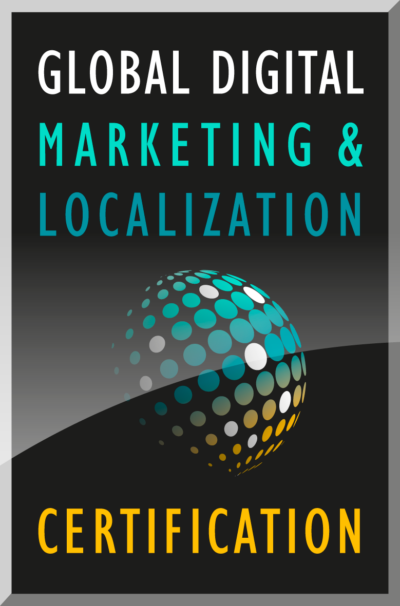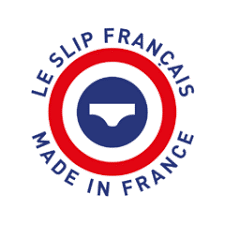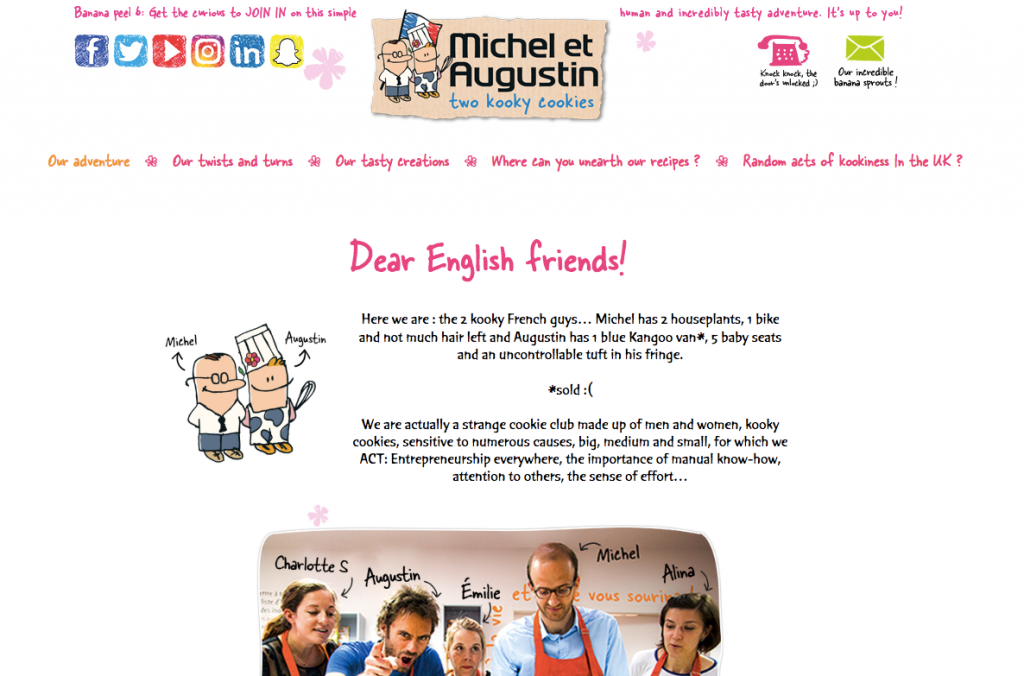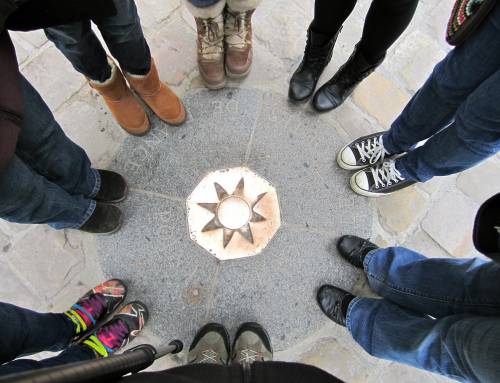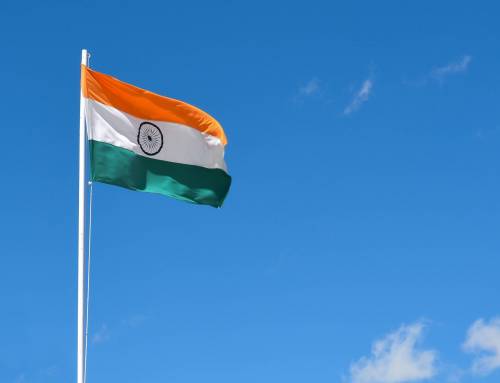This is a paper presented by Anna Zgadzaj, a recent graduate of the Global Branding and Marketing Certification (GBMC) program, and a former graduate of the Global Digital Marketing and Localization Certification (GDMLC) program. This paper presents the work being produced by students of The Localization Institute’s Global Branding and Marketing program. The contents of this Paper are presented to create discussion in the global marketing industry on this topic; the contents of this paper are not to be considered an adopted standard of any kind. This does not represent the official position of Brand2Global Conference, The Localization Institute, or the author’s organization.
Introduction
French companies, especially those in traditionally French industries such as luxury, fashion, beauty or wine, have been taking advantage of the country-of-origin effect for years. Some of the most established brands have been using French heritage messaging in their global communications to evoke associations of quality, sophistication, style and the famous savoir-faire.
In certain categories French connection can offer such a competitive advantage that even non-French brands adopt French-sounding names for the halo effect that it can give them. Unknown French companies emphasize their Frenchness when going global, even if their products are actually produced in China. French origin has become a convenient shortcut to gain quick competitive advantage, which can sometimes result in misleading “Frenchwashing”.
Recently however, we have seen some new entrants that are tapping into the “France as country-of-origin” trend in a more modern, forward-looking, and authentic way. Based on product quality and French know-how, these young brands are redefining “Made in France” with creativity, humor and messaging that deeply resonate with today’s conscious, digital consumer.
My objective is to present a couple of examples of such new generation French brands, and look at some strategies and best practices that make them successful in applying “La French Touch” in global branding.
Review
Numerous studies have shown that a brand’s country-of-origin (COO) can indeed provide a strong competitive advantage, create a favorable brand image and drive customer preference. It is used as a reliable cue of brand quality and acts as a halo effect in favor of products made in some countries (Usunier, 2013).
There are 2 aspects of COO that are particularly important:
- The importance of congruity between product category, consumer perception and country-of-origin. Consumer perceptions regarding the brands country-of-origin must concur with product category associations in order to avoid negative country-of-origin influences (Adina et al, 2014).
For example France has a positive image when it comes to wine, fashion or perfumes, while its associations with cars and high technology products are less positive. Research also shows that French pronunciation of brand name positively affects perceived hedonism of the product (Usunier, 2013).
- The importance of timing and its effect on how important country-of-origin is to consumer. Managers can benefit from COO positioning especially in the brand launch stage on the international market. For a less known brand COO may actually act as a brand itself, allowing marketers to position their products rapidly and with lower costs (Salciuviene et al, 2012). COO has higher influence than brand knowledge in low-involvement purchase decisions, such as FMCG (Adina et al, 2014).
Recent research suggests that the importance of COO has changed in the last years as a consequence of major evolution in sourcing and branding policies in multinational corporations – multinational production means most companies are paying less attention to COO as the source of competitive advantage (Salciuviene et al, 2012).
This opens up a great opportunity for differentiation for smaller brands whose products are actually both “designed in” and “made in” their country of origin.
Development
The research confirms that COO positioning for new French brands in selected categories can be an obvious strategy to gain quick competitive advantage in international markets. While many brands in fashion, cosmetics or luxury do just that (to a varying degrees of success), there is a new generation of brands who have taken the “Made in France” positioning to a new level.
Michel et Augustin and Le Slip Français are two such examples – both are young and original brands that have gained cult status at home and enjoy international success. The former is a premium patisserie brand; the latter is an iconic French male briefs producer.
Both meet the prerequisites for success outlined above: category match with country of origin (food and fashion), French names for hedonistic, low consideration categories, new brands entering foreign markets. Both are relatively small brands with products 100% designed and produced in France.
But in addition to the above, they also share some characteristics that make them stand out in the market, adding to their status of “Made in France” success story:
1) Rooted in French tradition and savoir-faire, but with a modern twist
Le Slip Français is French underwear, but male briefs (le slip) are the main product. Michel et Augustin make French patisserie, but are best know for cookies and liquid yoghurts – innovative and atypical products in France.
Product innovation, passion and respect for French manufacturing tradition are at the heart of these brands. Their mission is to preserve national tradition – Michel et Augustin educate consumers in the art of French pastry-making, organizing workshops at their venues in Paris and NYC and offering a national French pastry certification. They want to “make sure the art of French pastry continues to shine the world over”.
Le Slip Français’ mission is to “save French textile industry”, with strong emphasis on know-how and transmission of knowledge between generations. Their international websites prominently feature a section presenting their manufacturing workshops around France.
2) Leading with country-of-origin not only internationally, but at home too
It is obvious that “Made in France” is not just a shortcut to quick international success for these brands. It is part of their premium and authentic positioning at home too. Being French is ingrained into these brands’ DNA: with 100% French products and French brand names, they both incorporated French flag into their logos and liberally mix French expressions into their translated international websites. The Frenchness is emphasized with self-effacing humor, often centered on storytelling around the brands’ “Frenchie” founders.
3) Strong brand personality and human-like communication
These are human brands for the modern consumer, with unique personality and personal connection. Both are locally known as “troublions” (troublemakers) – Michel et Augustin use “troublions du gout” (“tasty troublemakers”) as their tagline (transcreated for international markets as “two kooky cookies”). The French press refers to Le Slip Français as a “troublemaker of Made in France”.
Brand personality and the way it is expressed differentiate the two brands from the traditional way in which premium French brands normally communicate. Humor and audacity are used in their communications, and both companies are known for innovative, sometimes edgy, viral marketing campaigns.
4) Mastery of digital channels and community engagement
The brands strongly rely on digital channels both to sell (Le Slip Français) and to interact with their communities. Tongue-in-cheek, timely and funny marketing campaigns combined with mastery of social media helped them built a dedicated community of fans – which supported the companies in entering new markets.
For their US premiere Le Slip Français created lots of buzz with a daring #Verylovetrip crowdfunding campaign to reunite their French mannequin Léo with his American sweetheart. French fans followed his (real-live) trip and helped the brand enter in direct social media dialogue with American customers.
 Similarly Michel et Augustin benefited from the support of their community when planning expansion into the US market – thousands of fans used hashtag #AllezHowardUnCafe addressed to the CEO of Starbucks to convince him to meet with the then unknown French company. It worked, and Michel et Augustin ended up with a deal that eventually led to their products being available in 7000 Starbucks across the US.
Similarly Michel et Augustin benefited from the support of their community when planning expansion into the US market – thousands of fans used hashtag #AllezHowardUnCafe addressed to the CEO of Starbucks to convince him to meet with the then unknown French company. It worked, and Michel et Augustin ended up with a deal that eventually led to their products being available in 7000 Starbucks across the US.
They admit that what let them successfully “sell cookies to the nation that invented cookies” was the “Made in France” differentiator and the positive associations that come with it.
The above strategies are just examples of how young French brands enrich their “Made in France” positioning through innovation, authenticity, transparency and community engagement. The important success factor is not just the congruity between the country-of-origin and their category, but also between how the brand personality and the way it communicates and interacts is congruent with the personality and communications preferences of its target audience.
Both Michel and Augustin and Le Slip Français use a perfect combination of traditional advantages of French brands in their categories with today’s tools to distribute, connect and communicate with consumers.
Implications
While good country-of-origin and category match is a prerequisite for unknown companies who want to gain competitive advantage in international markets, on its own it may not be enough to resonate with today’s discerning and digital savvy consumers. Authenticity, transparency and unique brand personality that is matched to that of target customers can take a brand to a new level and lead to more sustainable success.
Establishing a strong and authentic country-of-origin positioning in the home market first allows brands to retain consistent brand personality and messaging once they are ready to take their product international. It can also result in an added value of having strong brand equity and dedicated community of brand advocates who can help in international expansion, especially in digital channels.
Ultimately the country-of-origin effect is based on consumer’s association with a given country, not on what the brand wants it to be. But today’s consumers expect authenticity and transparency too, and they will be able to tell when a “Made in …” proposition is part of the brand’s DNA, and when it is just a convenient gimmick used for easier sell in international markets.
Author Bio:
Anna Zgadzaj is an international digital marketer with expertise in website globalization, multilingual content and cross-cultural communications. With background in linguistics and international relations, she has 18 years experience in international project management and 12 years in marketing and digital content. Over that time Anna has worked with clients across different sectors (B2B, consumer brands, nonprofits) in several countries, designing and implementing strategies for effective digital communications. Originally from Poland, she’s currently based in Paris, where she works as an independent web globalization consultant, specializing in helping SMEs and startups grow and improve their international online presence
Connect with Anna:
As a former student of the Global Digital Marketing and Localization Certification program, when I learned about the new Global Branding and Marketing Certification being offered I knew it would be a worthwhile investment. I was yet again very happy with the course – it provides solid, up-to-date knowledge on branding in the context of global marketing, and looks into fascinating topics such as hyperlocalization and cross-cultural consumer psychology. The theory, including some advanced concepts, is presented very clearly and illustrated with many real-life examples. I particularly appreciated Dr Nitish Singh’s interviews with industry practitioners and the additional insights they provided. Thank you for such a great learning experience!
Bibliography:
- Cristena, A., Capatina, G., Stoenescu, R.-D. (2015), Country of Origin Effect on Perceived Brand Positioning [online]. Procedia Economics and Finance. 23, 422-427 https://www.sciencedirect.com/science/article/pii/S2212567115003834 [Accessed 10 March 2019]
- Rosenblum, A., Haefner, J. (2009), Country-of-Origin Effects and Global Brand Trust: A First Look [online], Journal of Global Marketing, 22:4, 267-278 https://doi.org/10.1080/08911760903022432 [Accessed 10 March 2019]
- Salciuviene, L., Ghauri Pervez, N., Streder, R.-S. (2012), Do brand names in a foreign language lead to different brand perceptions? In: Piacentini, M. and Cui, C. (ed.), Multicultural Perspectives in Customer Behaviour, Routledge, 45-64
- Selentey, P. (2018), Ces entrepreneurs Made in France, Leduc.s Editions
- Usunier, J.-C., Lee, J.-A. (2013), Marketing Across Cultures, 6th London: Pearson
References and related articles:
- Michel et Augustin: https://www.micheletaugustin.com/
- Le Slip Français: https://www.leslipfrancais.fr/
- https://fashionista.com/2015/07/fake-french-brands
- https://www.capital.fr/votre-carriere/miser-sur-la-french-touch-pour-creer-son-business-a-l-etranger-1128104
- https://www.campaignlive.co.uk/article/france-french-brands-abroad/481093
- http://nttw.co/le-slip-francais-made-in-france-qui-a-du-mordant/
- http://www.influencia.net/fr/actualites/media-com,audace,reve-americain-slip-francais,5482.html
- https://www.capital.fr/votre-carriere/la-marque-michel-et-augustin-est-deja-presente-dans-500-points-de-vente-a-new-york-1160609
Disclaimer



